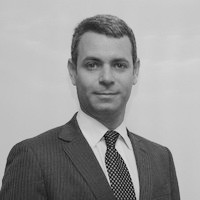Multi-asking
Latin America comprises multiple and often very different domestic project finance markets where local knowledge is a prerequisite for best practice project delivery. Proximo talks to four members of the Latin Americas team at TMF Group about their perspectives on post-pandemic project financing in Brazil, Uruguay and Argentina.

Global challenges resolved with local solutions – the pandemic has given that mantra new urgency in Latin American project finance markets.
The region has been hit hard by the pandemic – several Latin American sovereigns were downgraded in 2020. But unlike sovereign ratings, there is no one-size-fits-all methodology for project financings, the majority of which are tailored solutions to a unique set of circumstances and requirements. And although project financing in the region is challenging, even at the height of the pandemic a number of major deals still managed to reach financial close – notable examples include the Project Alma and Enfragen refinancings, and the Huemel and New Juazeiro (also known as Jacaranda) renewables financings.
Economic fallout from Covid-19 has accentuated, and in some cases accelerated, change that was already underway in certain Latin project sectors: for example, the shift in Brazil to smaller renewables projects that sell energy outside the centralised grid and the recent regulatory boost to Brazilian mining which is now expected to make a rapid post-pandemic recovery. And although the gradual decline of oil, and to a lesser extent gas, in the global energy mix over the next two decades will throw up problems for some Latin markets, there is also the very real potential for the region to become a lithium and hydrogen hub as the pace of global energy transition picks up.
As and when the region begins to emerge from lockdown, domestic project finance markets face some very disparate infrastructure development challenges that require the marriage of significant local market knowledge with global project finance expertise and funding pools.
There is commonality to some of the challenges facing the region’s project markets. There is a desperate need for investment in infrastructure across region. Cash-strapped governments are looking to stimulate mothballed economies via infrastructure stimulus and sponsors want to re-start projects that have been delayed over the past year. There is also a dearth of local currency solutions and longstanding issues linked to sovereign creditworthiness and currency stability. Concurrent with that, borrowers face increasing competition for a share of the international bank project lending pie with developed markets projects and there is often the need for significant DFI involvement (local, regional and international) in multi-sourced financings for big-ticket capex projects.
But for each common theme there are multiple local regulatory and economic nuances, and even more local project demand, supply chain, documentation, legal and financing issues that are totally unique to each sovereign project finance market – and sometimes those elements are not even standardised in a given country.
In short, global and local is not a marketing mantra for project finance in the region – it is a requirement for well-structured deals with the solidity to withstand pressures that might otherwise cause a default.
TMF Group is a leading provider of critical administrative services, helping clients invest and operate safely around the world, with offices in every country in Latin America. It works with governments, project developers, sponsors, and local and international investors in the infrastructure space. The firm typically acts in a number of project finance roles – facility agent, security agent, security trustee or collateral agent, inter-creditor agent and account agent – and is acutely aware of the value of local knowledge, hence its support for Proximo’s Latin America Report. Via its combination of global and local footprint, TMF is ideally placed to give a contextualised view from the ground on the spectrum of hurdles and opportunities in Latin markets as the region begins to emerge from one of the most testing periods in its economic history.
Proximo sat down with four members of the TMF Latin Americas team to discuss the new realities of project financing in individual Latin markets as the region moves towards pandemic recovery mode.

Karla Fernandes, Head of Capital Markets Services & CLCO Brazil

Martín Improta, Country Leader Uruguay & Paraguay and Capital Markets Leader South LATAM

Luis Gustavo Vernet, Capital Markets Services LATAM Coordinator

Danilo Batista de Oliveira, Client Services and Transaction Manager for Brazil
Proximo: Have commercial banks in the region been supportive to sponsors in terms of restructuring and refinancing? Can they continue to be for much longer? And has any project funding innovation been produced by the pandemic – capital markets solutions for example?
Fernandes: Generally, commercial banks in Brazil have been supportive, although I am not aware of any major innovation in terms of the financial products on offer.
Oliveira: We saw lenders providing interim solutions in Brazil, but not long-term solutions. It’s difficult to say whether at the end of Covid things will return to normal – and the political environment is a factor to consider.
Looking ahead, the climate might get harder for existing small and medium size projects in Brazil. The banks have to continue to support their existing big-ticket project portfolios – if they foreclose they will have a major distressed asset on their books and may struggle to find buyers in the current environment. However, for smaller project assets, for example in the renewables sector, buyers are easier to find. That said, every project is unique and no bank is likely to pull the plug on a scheme that shows signs of strong viability once the world returns to normality.
Improta: Banks in Uruguay have also been supportive. They have lent a lot of money to companies against a low rate and are desperate for more money to lend, particularly to pharma.
Vernet: In Argentina banks cannot be supportive much longer. The regulator has issued new rules designed to promote support from the capital markets, but alignment is very difficult. Argentina had a crisis due to local political developments just before Covid-19. TMF was present with project finance activities but the drop in valuation of the peso had a great impact on the cash flow of projects and many plans were paused.
Proximo: Have you experienced a drop-off or increase in demand for certain services over the past year? What are the implications of that in the context of the wider project market, and where do you see your focus and growth post-pandemic?
Fernandes: We foresee a decrease in demand for agent services for large project finance in Brazil and more medium and small size deals. The larger deals need more international funding to go for 12-20 years tenors and a US dollar and/or euro influx is needed to get those deals off the ground – currently there are fewer credit lines available for project finance.
Vernet: New financing, which does not always need agent services, has dropped off and there has been a major increase in restructuring in Argentina, which does require agent services.
Improta: Projects have been frozen in Uruguay during the pandemic and the focus has been, and will be, on restructuring. That said, the real economy and project market have not been irreparably affected for the future and recovery should be quite quick.
Proximo: Has the cost of commercial bank greenfield project debt risen significantly during the pandemic period? And if borrowers are paying a pandemic margin premium, are there ways to offset those cost increases?
Improta: Costs did not increase in Uruguay.
Oliveira: Long-term loans in Brazil are affected, not so much on the cost but on the length of tenor available.
Vernet: In Argentina costs increased significantly but TMF can help get them down via its agent services.
Proximo: Has the pandemic caused Latin project borrowers to be more reliant on DFIs for greenfield funding? Is multi-sourced debt currently the only realistic option for large scale projects or are pure commercially-banked project financings still cost-of-debt effective for the right credits? Is there also a growing role for alternative project debt providers – institutional lenders – in the region?
Fernandes: In Brazil, beyond multi-sourced facilities for major projects, the DFIs have not been particularly active, nor has there been a noticeable increase in demand for DFI debt given their decision-making can take a long time. But they are useful for very big-ticket projects.
We have seen a new profile of commercial project lenders in the overall structured area for Tech. Some look for medium-sized deals but often they are not really prepared to do deals in the local market and use the US dollar market instead.
Oliveira: IDB support does attract commercial banks and IDB as project guarantor could bring more institutional lenders to the table, an alternative to bank funding that the Brazilian project sector hopes will grow. Funds are looking at Brazil, but for cheap assets rather than as potential project lenders.
Vernet: DFIs in Argentina work through the government and they have not been very active in the project space. The loans they have done have gone directly to the government for healthcare provision during the pandemic. What would be useful is development banks taking care of the construction period on projects and leaving the less risky long-term post-construction period to commercial lenders.
Improta: DFIs have been very active in Uruguay, but participation has been largely via government in solar or wind energy projects: 90% of energy is produced by sustainable energy projects, but because of the size of the country, the size of projects is limited. Commercial banks do not finance projects related to energy in Uruguay, they are always financed by the IDB or other DFIs.
Proximo: Is local currency financing for major projects (greenfield or post-construction take-outs) likely to play a bigger role in the region going forward?
Fernandes: Yes. In Brazil local pension funds could play a major role in local currency project finance solutions, but their participation is extremely limited at the moment.
Vernet: Local securities regulations are pushing to attract investors and stimulate local currency financing – but Argentina is a tough market at the moment for any type of project funding.
Improta: Unlike Argentina, Uruguayan FX is stable. Moreover local investors in projects have appetite for both local currency and US dollar projects.
Latin American project markets present as many opportunities, particularly given the global push to carbon net zero, as they do challenges. Some of those challenges are unique to each nation state, and some of the opportunities have a global demand context – either way, a global/local approach is key to project delivery.






